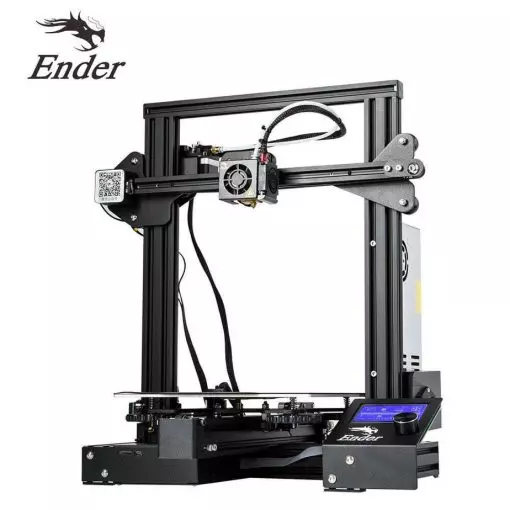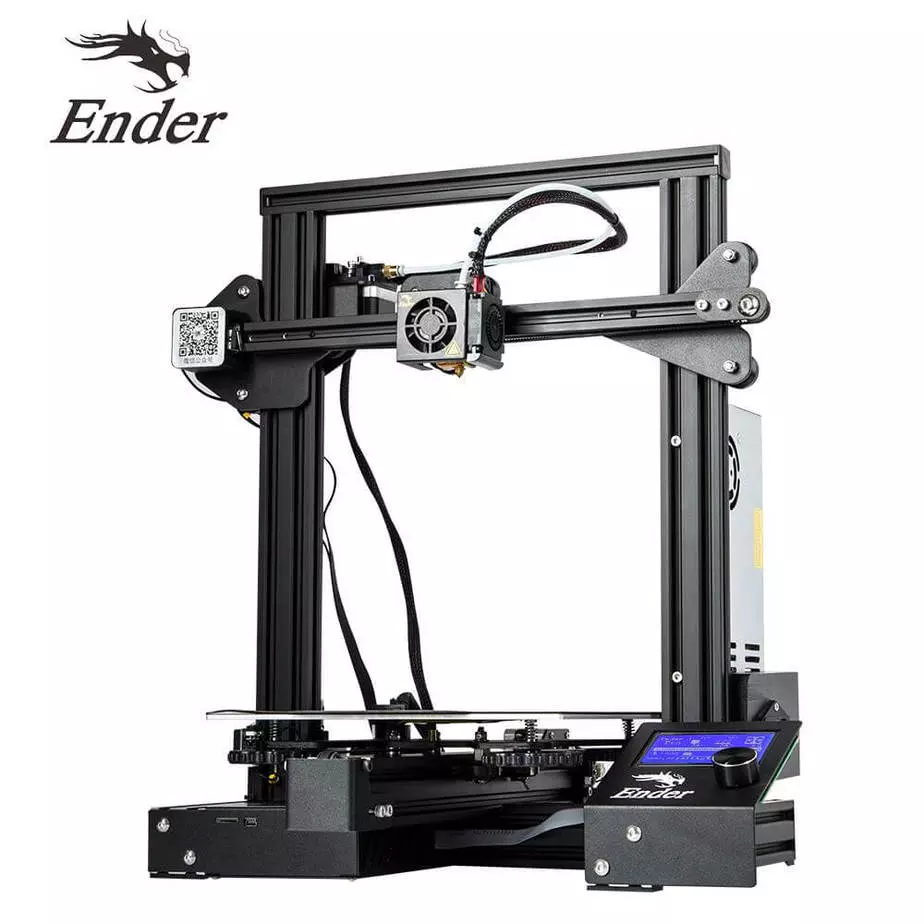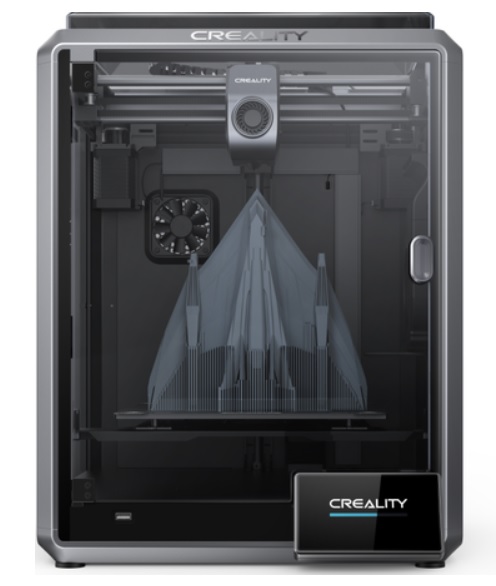Compare Ender 3 vs Ender 3 PRO vs K1
Comparison between the best 3D printers
Choose the best 3D printer at the best price. The cheapest 3D printers are here.
Buy a 3D printer here with 3D Fila.
 |
 |
 |
|
| Model | Ender 3[BUY Ender 3] |
Ender 3 PRO[BUY Ender 3 PRO] |
K1[BUY K1] |
| Printing Material | Filament | Filament | Filament |
| Estimated price | $210,00 | $258,00 | $399,00 |
| Fabricante | Creality 3D | Creality 3D | Creality 3D |
| Release Year | 2018 | 2019 | 2023 |
| Print Volume [mm] | 220x220x250 | 220x220x250 | 220x220x250 |
| Printer Size [mm] | 440x440x465 | 440x440x465 | 355x355x480 |
| Weight [kg] | 6,62 | 6,62 | 12,5 |
| Power Loss Recovery | NO | NO | YES |
| Enclosed printer | NO | NO | NO |
| Bed Leveling | Manual | Manual | Automatic |
| Filament End Sensor | NO | NO | YES |
| Bed type | Heated | Heated | Heated |
| Power supply system | Bowden | Bowden | Direct Drive |
| Standard nozzle | 0,4 | 0,4 | 0,4 |
| Maximum Nozzle Temperature [°C] | 255 | 255 | 300 |
| Maximum Bed Temperature [°C] | 110 | 110 | 120 |
| Maximum printing speed [mm/s] | 180 | 180 | 600 |
| Filament holder | YES | YES | YES |
| Camera for supervision | NO | NO | YES |
| Recommended filaments | PLA, TPU, ABS, PETG | PLA, TPU, ABS, PETG | ABS, PLA, PETG, PET, TPU, PA, ABS, ASA, PC, PLA-CF, PA-CF, PET-CF |
| Recommended slicers | Cura, Simplify, Slic3r | Cura, Simplify, Slic3r | Creality Print; Cura, Simplify3D e PrusaSlicer |
| Maximum Resolution [mm] | 0,1 | 0,1 | 0,1 |
| Processor | 8 bits | 32 bits | |
| Display | Mono | Mono | Display touchscreen 4,3'' |
| Power Supply | 24V / 270W | 24V / 360W Meanwell | 110/220V / 350W |
| Connectivity | SD / USB | SD / USB | Ethernet / USB / Wi-Fi |
| Operating systems | Windows, Mac, Linux | Windows, Mac, Linux | Windows, Mac, Linux |
| Date of registration in the system | 2021-04-13 | 2021-04-14 | 2023-04-17 |
| Release date | 2018 | 2019 | 2023 |
| Extra features | The Ender 3 V1 is a DIY assembly 3D printer, a sales leader since 2017, standing out for its cost-benefit. With a wide printing capacity, it has a CNC machined structure for precision and stability. It offers high-precision prints with low noise, thanks to its innovative V-profile and pulleys. It has a self-adhesive magnetic platform for easy removal of models and excellent adhesion. The Ender 3 heats up quickly, reaching 100°C in 5 minutes, ideal for agile prints. It includes protection against power failures, allowing you to resume printing after interruptions, saving time and material. | The Ender 3 Pro stands out for its beginner-friendly assembly and easily modifiable structure. With a 350W power supply, it heats up quickly and has a simple application that offers good print quality. However, its motors and fans are noisy, and the interface seems outdated. Assembly is accessible, without the need for advanced techniques, and it has integrated belt tensioners. It includes a detailed guide and supports microSD card and USB. | The K1 is an extremely fast FDM 3D printer, reaching 600mm/s, 12 times faster than standard models. Equipped with a Core XY system and lightweight print head, it offers energy efficiency and high print quality. It stands out for its dual-gear extruder and quickly heated hotend, as well as dual cooling to prevent warping. Its robust structure ensures stability at high speed, with optimized software to speed up the printing process. |
| Support for multiple colors and materials (AMS and CFS) | NO | NO | NO |
Notes * |
|||
| Cost-benefit | 6 / 10 | 6 / 10 | 8 / 10 |
| Hardware | 0.5 / 10 | 0.5 / 10 | 4.8 / 10 |
| Screen | . | . | . |
| Print volume | 3 / 10 | 3 / 10 | 3 / 10 |
| Performance | 1 / 10 | 1 / 10 | 5 / 10 |
| [BUY Ender 3] | [BUY Ender 3 PRO] | [BUY K1] |
Conclusion |
| In comparing the three 3D printers—Ender 3, Ender 3 PRO, and K1—each model presents distinct advantages aligned with different user needs and budgets. The **Ender 3** remains a strong contender as a budget-friendly option, making it a valuable choice for beginners or those prioritizing cost-effectiveness. Its simplicity in design and operation, combined with solid printing capabilities, caters well to casual users or hobbyists. However, its manual bed leveling and lack of modern features like power loss recovery or filament end sensors limit its appeal for more advanced users. The **Ender 3 PRO** builds upon its predecessor’s strengths while introducing slightly improved power and assembly features. This model is still accessible to beginners but offers a bit more stability and performance. However, it shares similar limitations regarding automation and features when compared to newer models. The **K1**, released more recently, significantly raises the bar in terms of technology and capabilities. It features advanced specifications such as automatic bed leveling, power loss recovery, and an impressive maximum print speed, making it well-suited for users seeking high performance and efficiency in their 3D printing tasks. While it comes at a higher price point, its enhanced features and robust design justify the investment for users who require faster and more reliable printing. Ultimately, the choice among these printers hinges on your specific needs and budget. For those just starting out or focused on affordability, the Ender 3 or Ender 3 PRO are excellent solutions. Conversely, for users seeking high-speed printing and advanced features, the K1 is a superior option despite its higher cost. Each printer offers a unique blend of features and performance, giving potential purchasers ample choices based on their requirements. |

